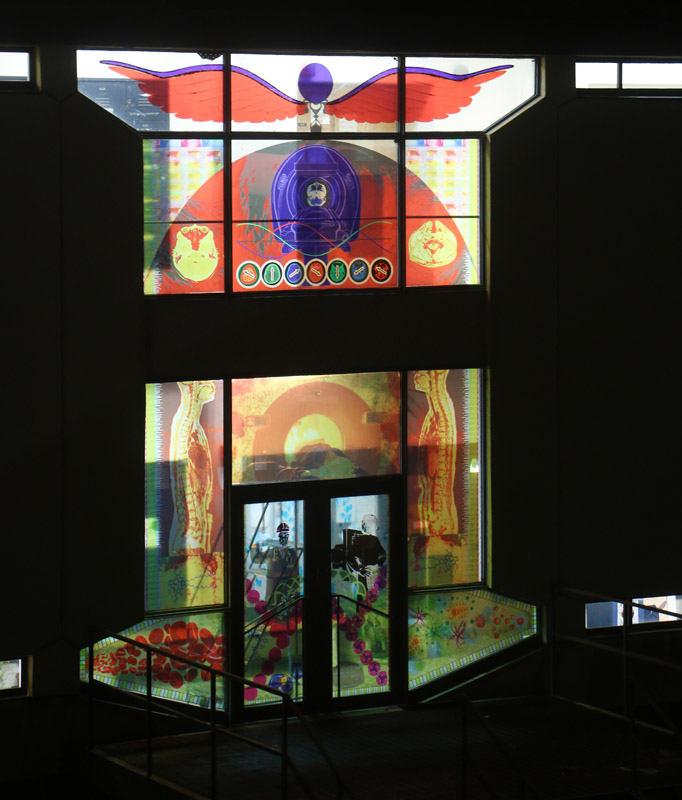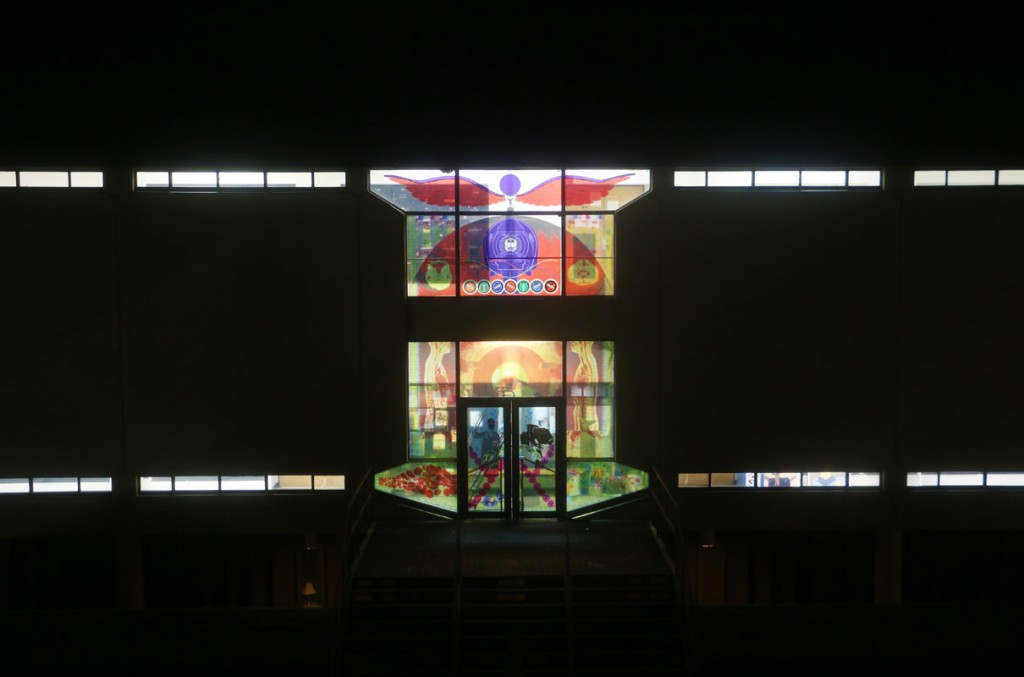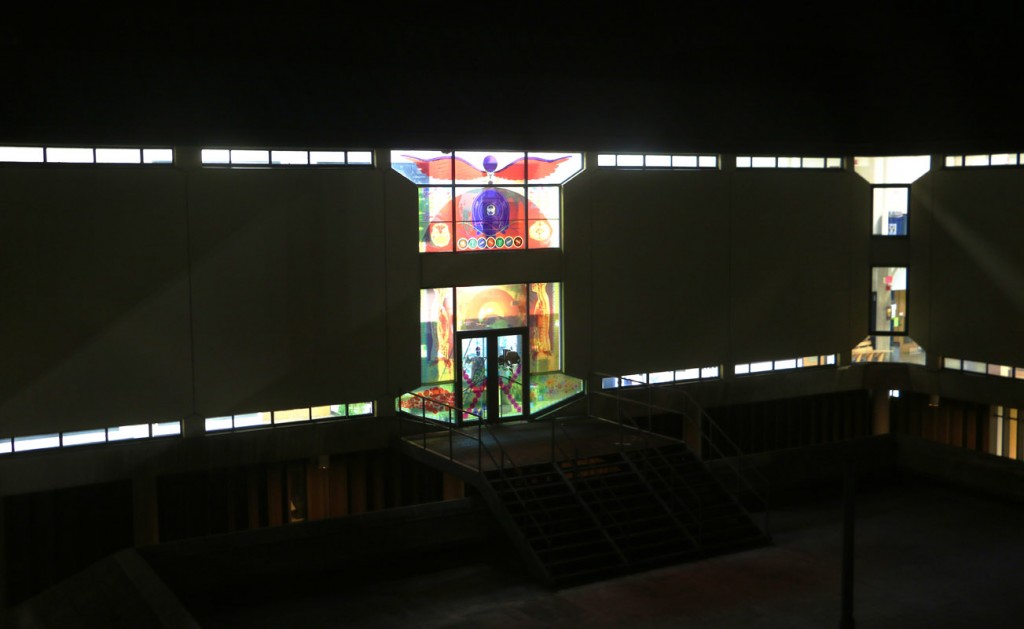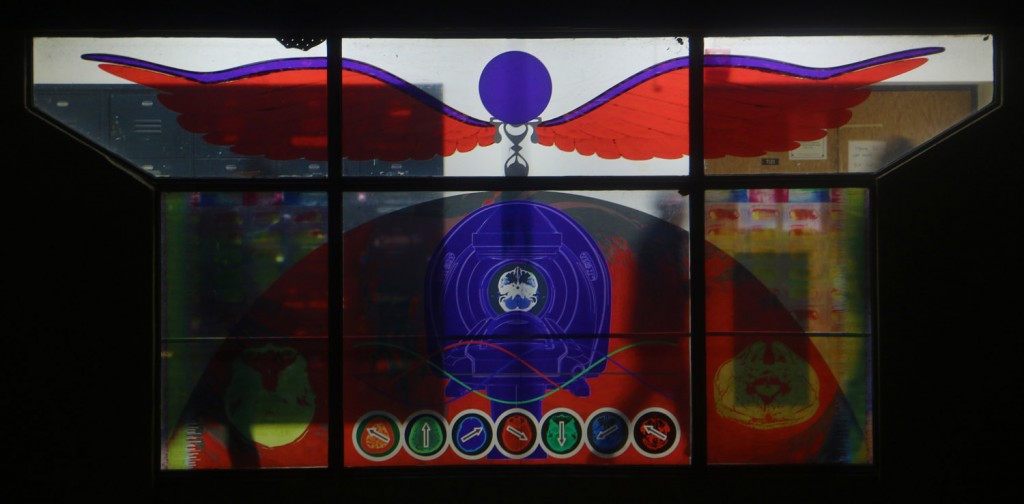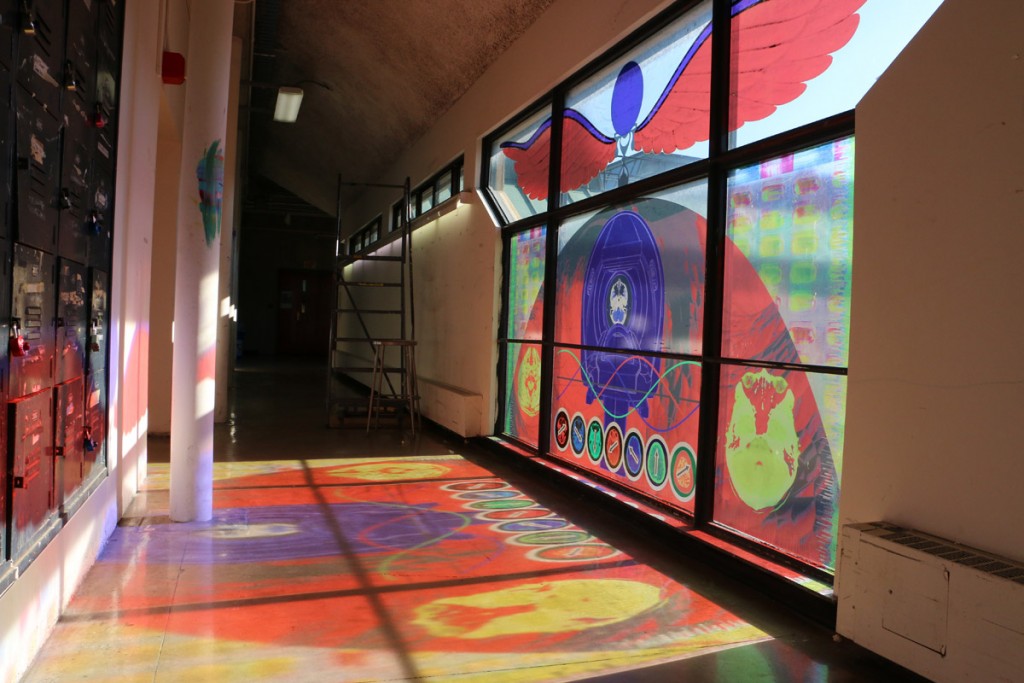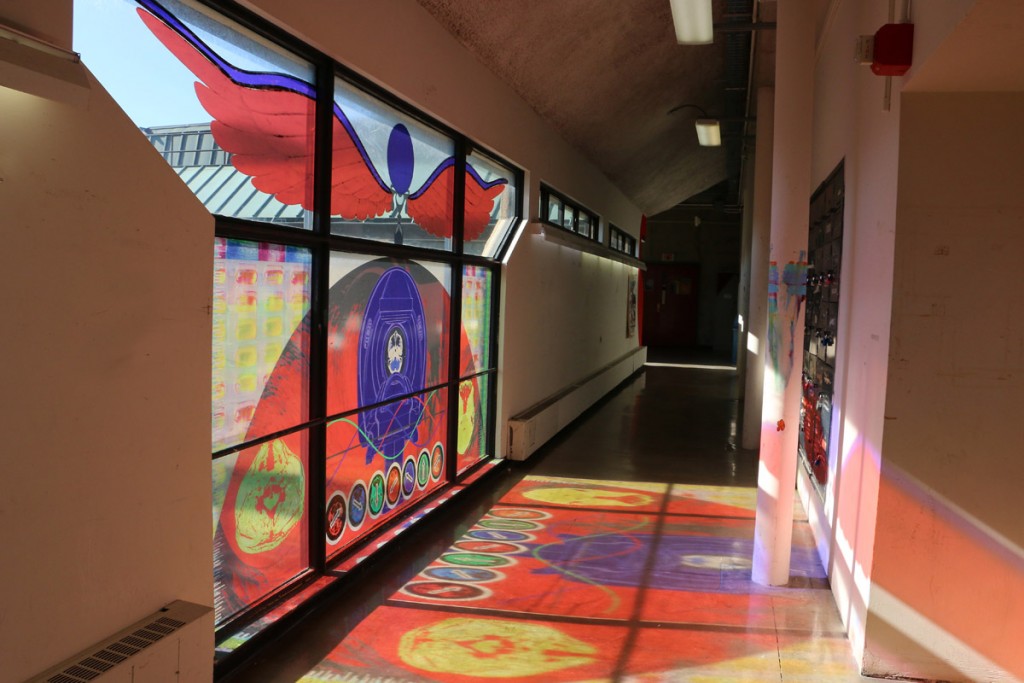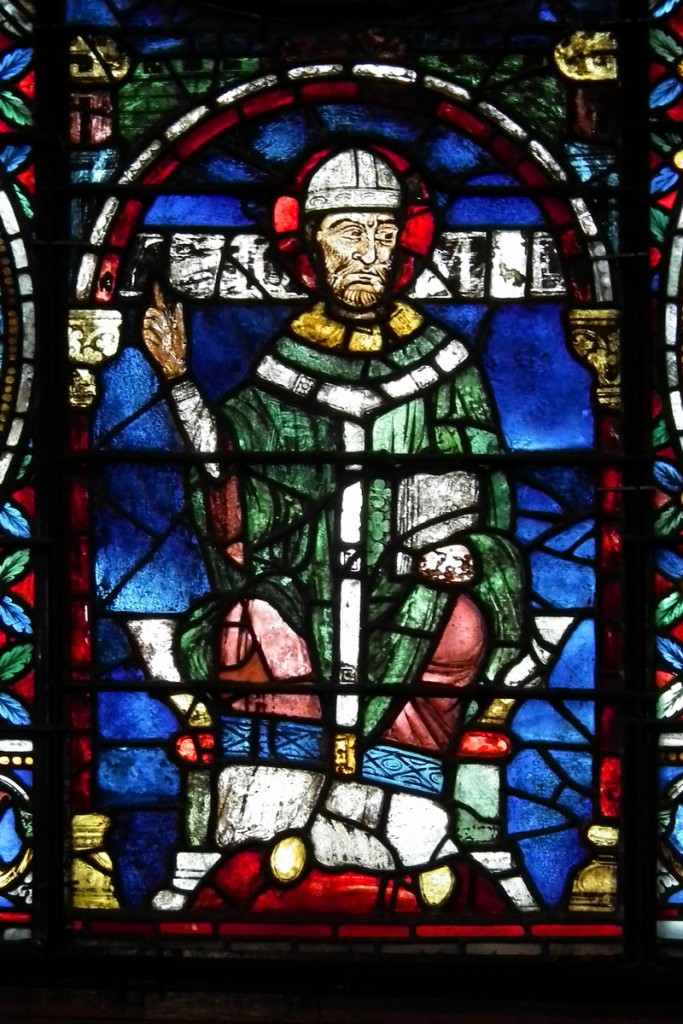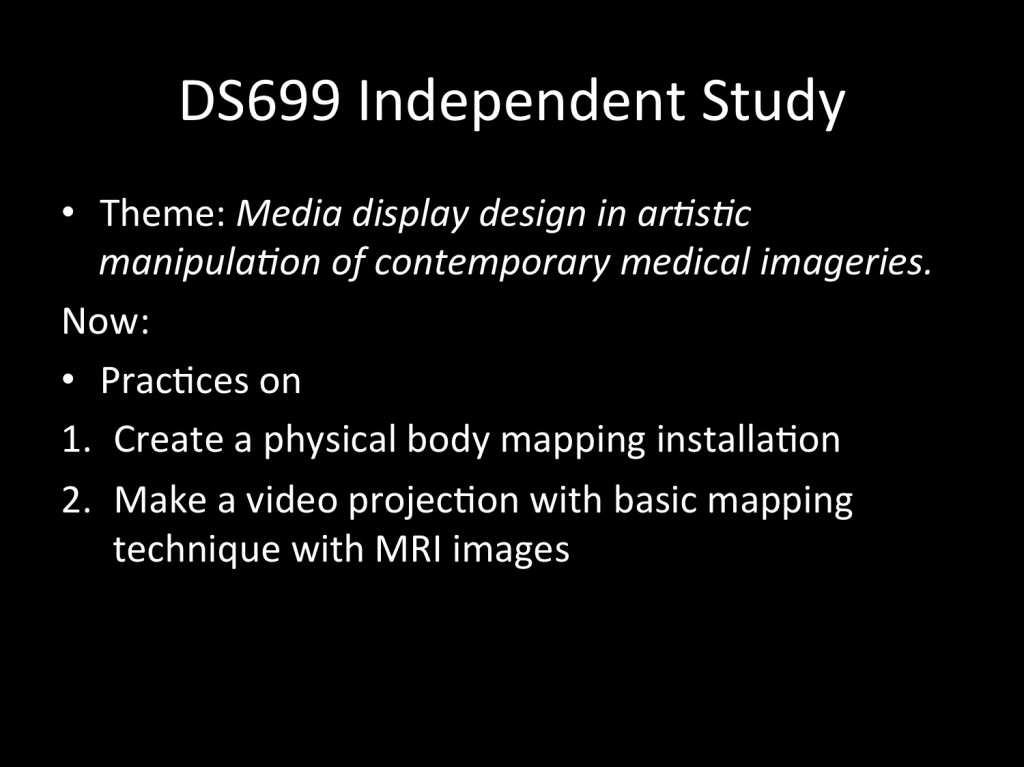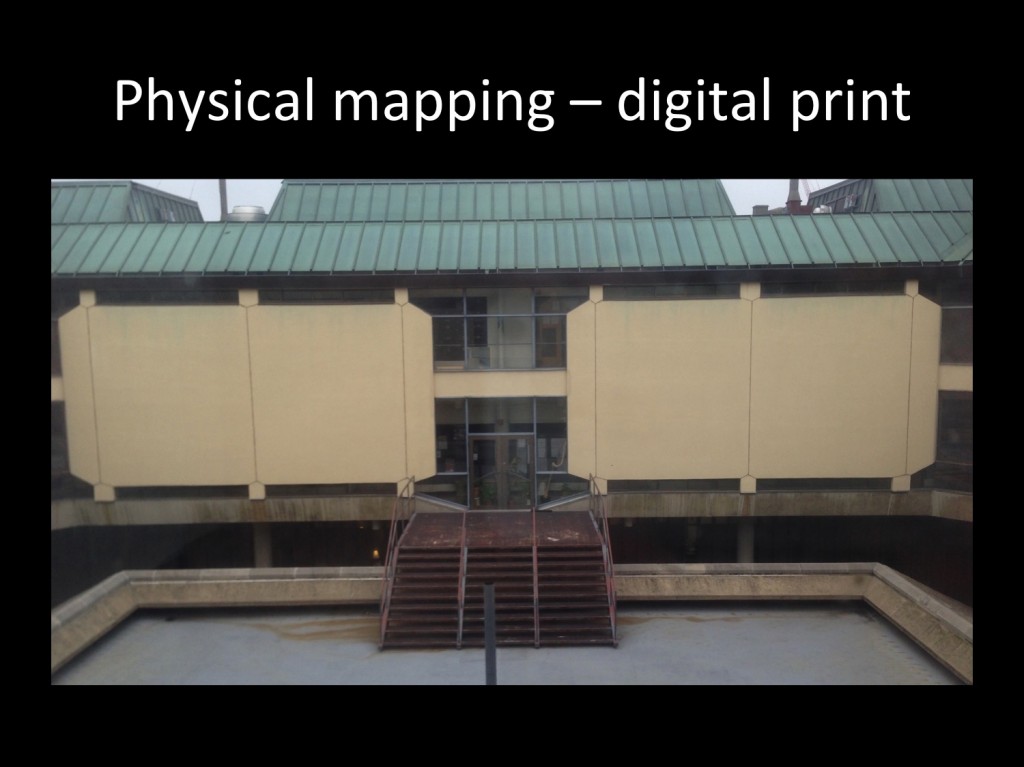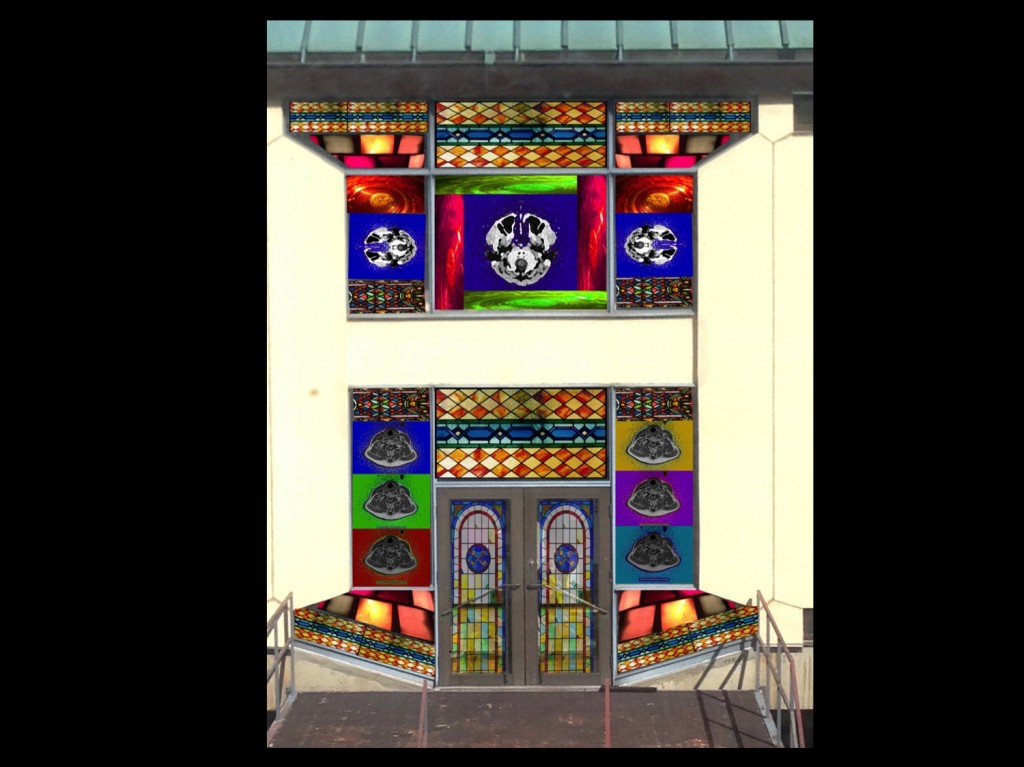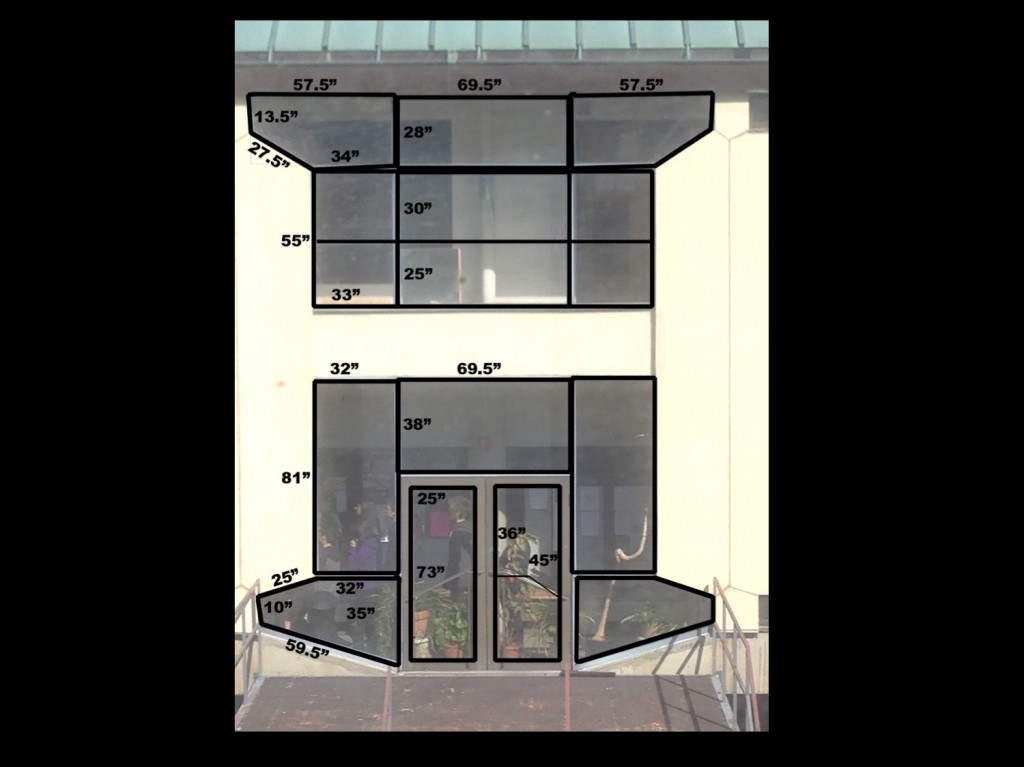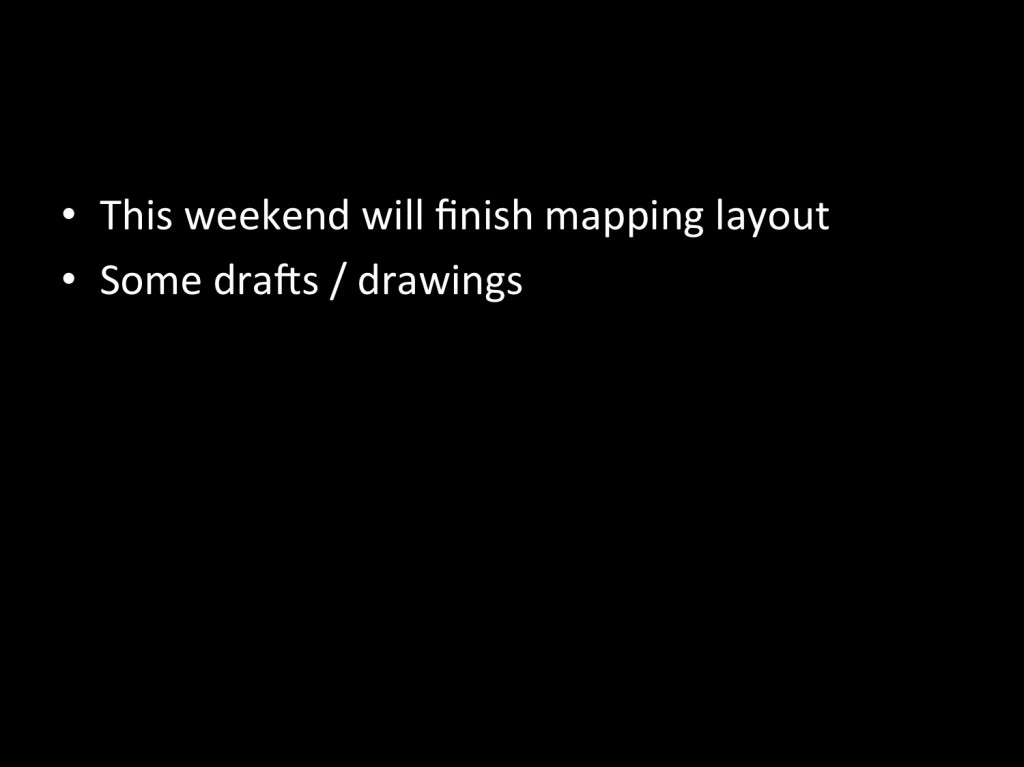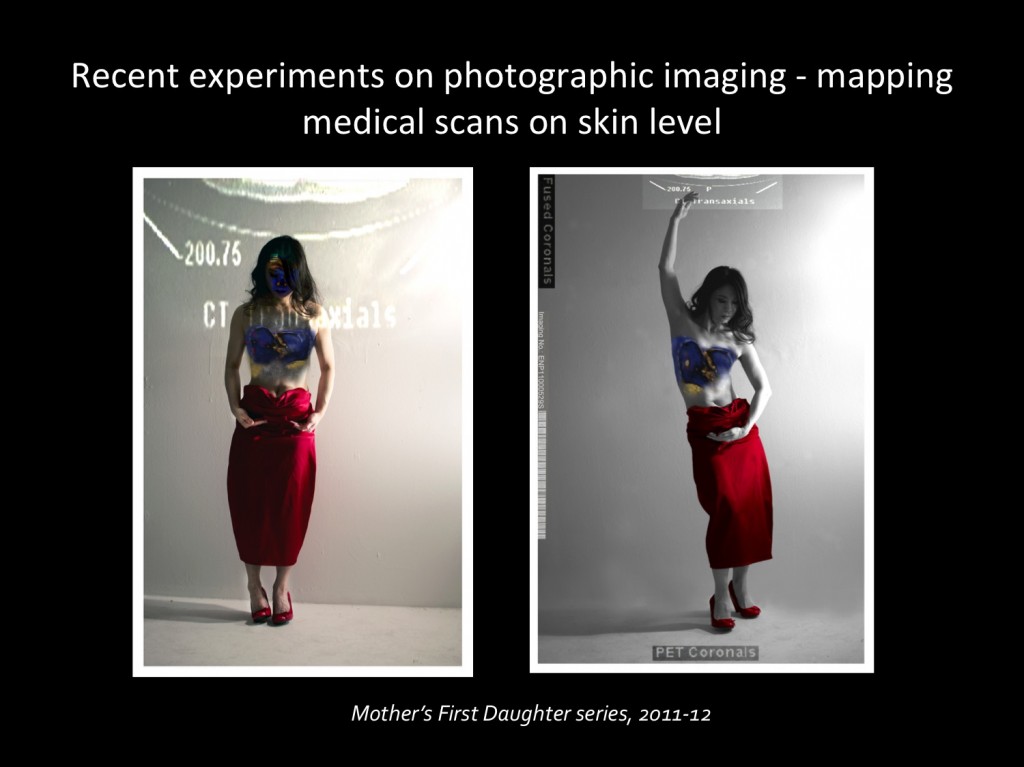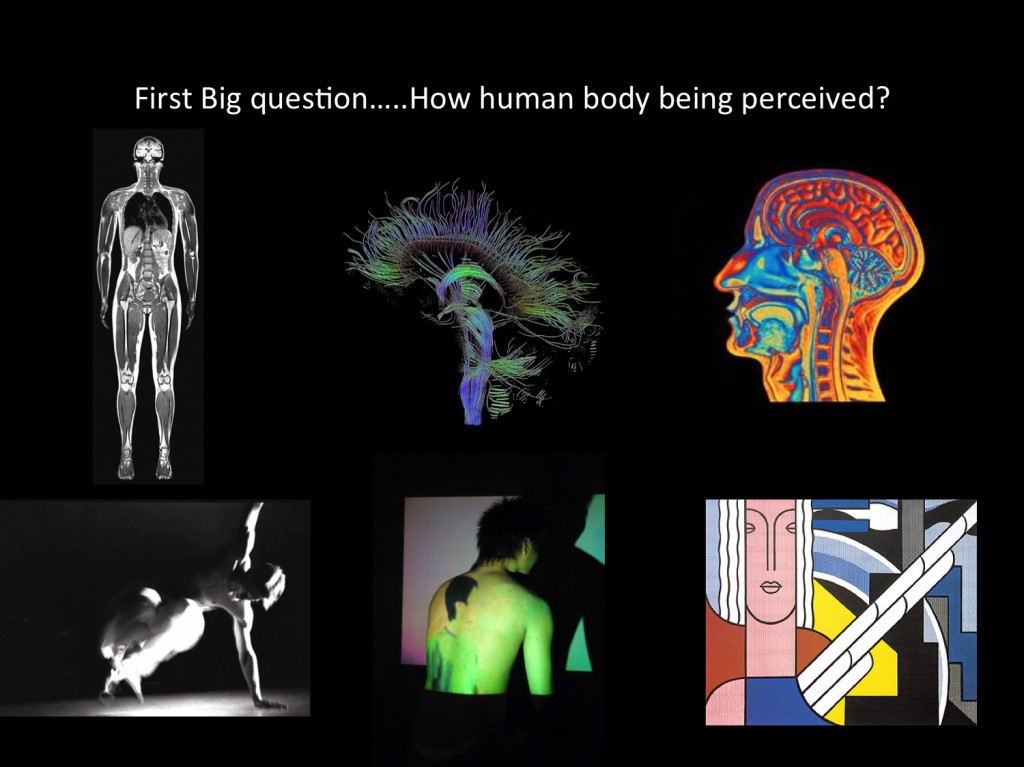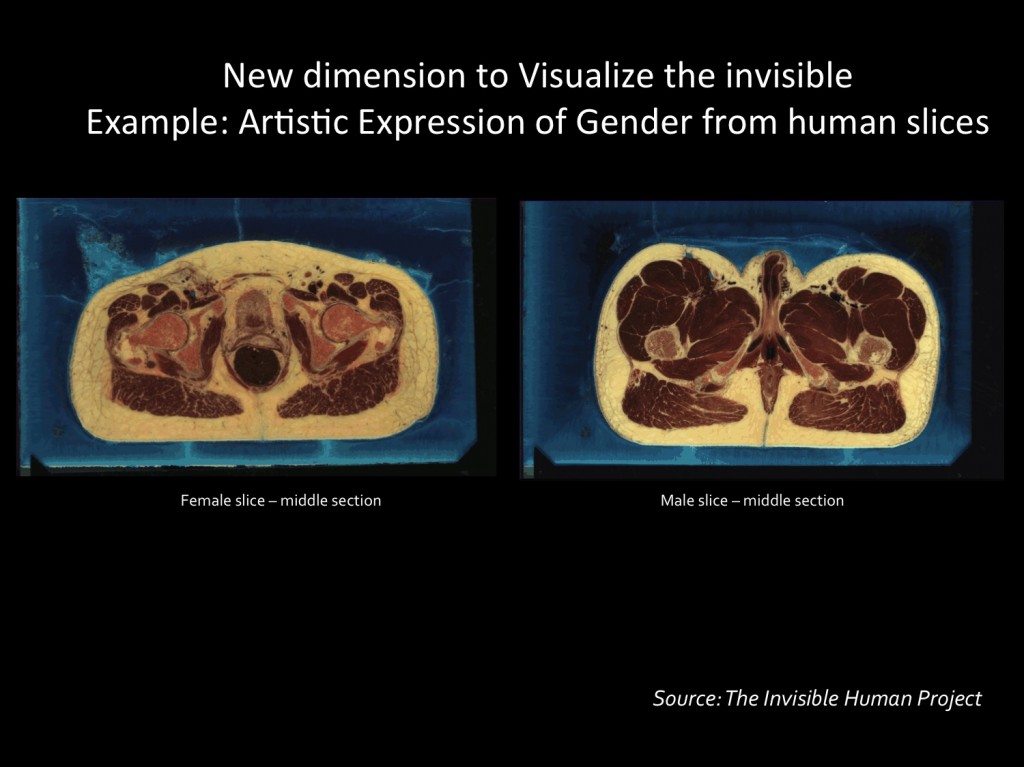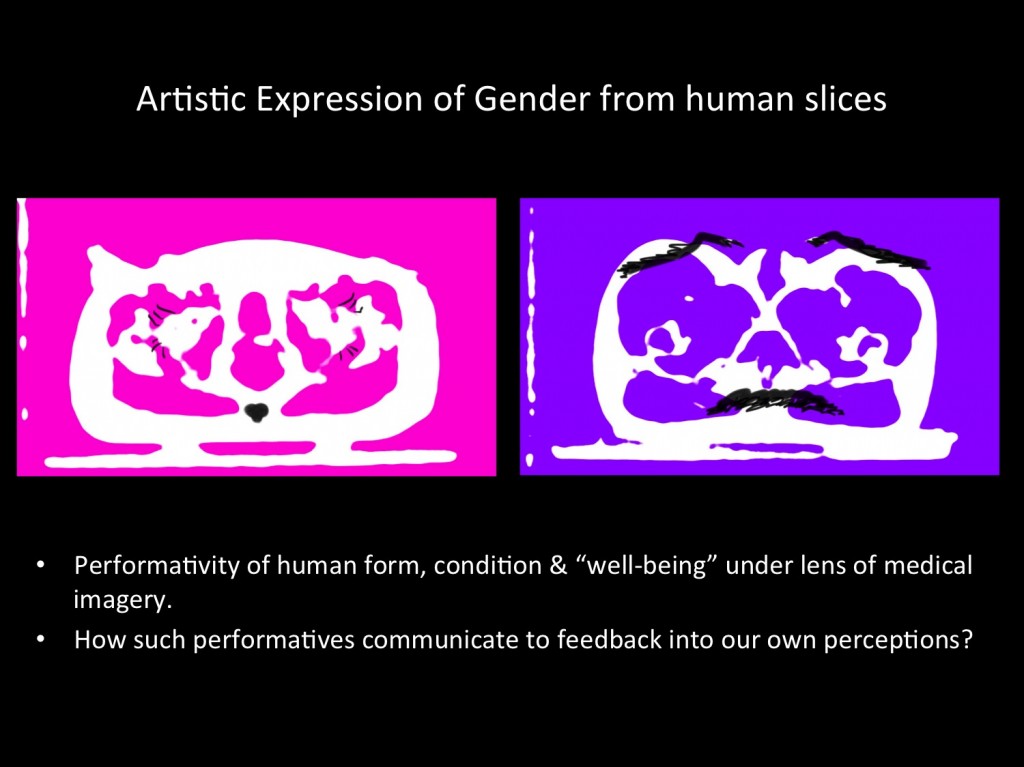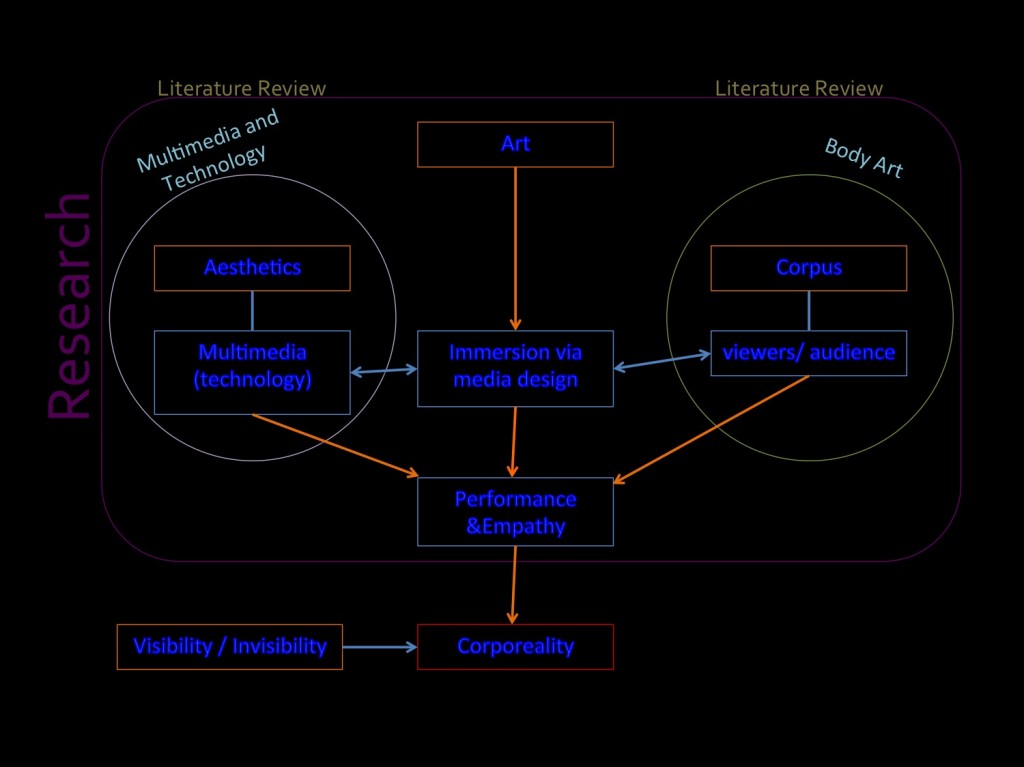My Independent Study with Professor Kevin Ponto in this semester has come to a final stage. I would like to conclude my study with the following discussions:
My proposed study theme was “Manipulation of contemporary medical imageries”. The method of investigation was art practice. This kind of art practice project was not only a personal expression, but also rooted on studying how our human condition was viewed through a multi-disciplinary lens in art, design and medical science. My art practice comprises 2 parts:
- Create a physical artwork which addresses medical image mapping.
- Extend the theme with a video projection with basic mapping techniques to display MRI images.
In early November 2015, I completed all 2 parts. These two artworks became part of my MA Show in Mid-November, along with a performance piece performed by my music collaborator, Brain Grimm and myself.
Overall, this project is extremely fruitful. Though there were many obstacles during the process, I am very pleased of the experience and the outcome.
Hereby, I would like to discuss mainly on the architectural glass window installation. This is because the installation work represented best of my project goals. This installation piece took me the longest time and greatest effort. Yet. It is also the most rewarding one. I spent 2 months to conduct extensive research on:
- Gothic stained glass (color scheme, method of narrative, pattern design, etc.)
- Architectural environment of the Humanities Building, UW-Madison (Brutalism in architectural design, geometrical features of the 13 glass panels on north wing, dynamical change of visual characteristics depends on light setting from day to night and from interior to exterior, inhabitant behaviors, etc.)
- Design of the window installation with medical images to tell my personal story (my own MRIs, chemical structure of human cell and drugs, medical symbols, etc.)
- Use of materials (Choice of see-through vinyl sheets, degree of transparency, degree of color intensity when light pass through, durability, UV protected, material cost, shipping cost, shipping timeframe, contingency plan, etc.)
I enjoyed the research process a lot. My knowledge on medical images and media design was enriched in a large extent. In addition, the installation occupies the 6th and 7th floor and was 18.5 feet high and 15.5 feet wide, with 13 window panels in different shapes and dimensions. It was absolutely challenging both in artistic sense and physical installation process. The outcome was very satisfied. The artwork was well-received by different parties. Besides learning and art-making satisfaction in this project, I also received practical rewards. This installation will continue to stay in the Humanities building. Moreover, I was awarded the 2016 David and Edith Sinaiko Frank Graduate Fellowships for Woman in the Arts in Mid-December. This award will allow me to continue my art project in the same theme.
In this sense, this particular installation has met 90% of what I originally planned for. I reached my goals with extra rewards. The 10% left was mainly about time management and budget constraint. The installation process required manpower exceeded one person. Ideally, I need at least 3 persons to work together for 1-2 days. In reality, I completed the installation one classmate in 2 full days. It is quite a miracle. In addition, the cost of materials was very high when I quoted the pricing locally. My final choice is to order the vinyl sheets from China-based printing company and had them shipped to me. In this case, I took the risk of quality control. Fortunately, the prints came out nicely. The 10% hurdles did not cause major drawbacks in the overall project.
As mentioned, I will move this project forward under the funding from the award I got. In my application of this award, I proposed that, “This project will served as a complete series of my architectural installation as well as part of my PhD (pending) preliminary requirement.” I am recently moving forward to the area of media technology, especially application of virtual reality.
My next step is to consolidate my PhD program and really start! I plan to move into the research and practice process towards my PhD study direction.
In conclusion, I have excellent experience in this project. Professor Ponto supervised me on regular base with clear guidance. And he gave me enough trust and freedom so I was able to excel academically and artistically. I am looking forward to proceed to the next phrase under Professor Ponto’s advice.
Additional writing about contemporary artists who employed their own images as “medical body”. This writing was abstracted from my MA degree research:
“Autopathography of the Artist’s Own Medical Body”
(uploaded article from academic.edu)

